
Albert Einstein with Mrs. Valentine Bargmann outside his home in Princeton, NJ, March 14, 1953. (Photo by Esther Bubley).
Albert Einstein is widely acknowledged to be one of the greatest and most influential physicists of all time. Einstein is best known for developing the theory of relativity, but he also made important contributions to the development of the theory of quantum mechanics. Relativity and quantum mechanics are together the two pillars of modern physics.
His mass–energy equivalence formula E = mc2, which arises from relativity theory, has been dubbed “the world’s most famous equation”. His work is also known for its influence on the philosophy of science.
He received the 1921 Nobel Prize in Physics “for his services to theoretical physics, and especially for his discovery of the law of the photoelectric effect”, a pivotal step in the development of quantum theory.
His intellectual achievements and originality resulted in “Einstein” becoming synonymous with “genius”.
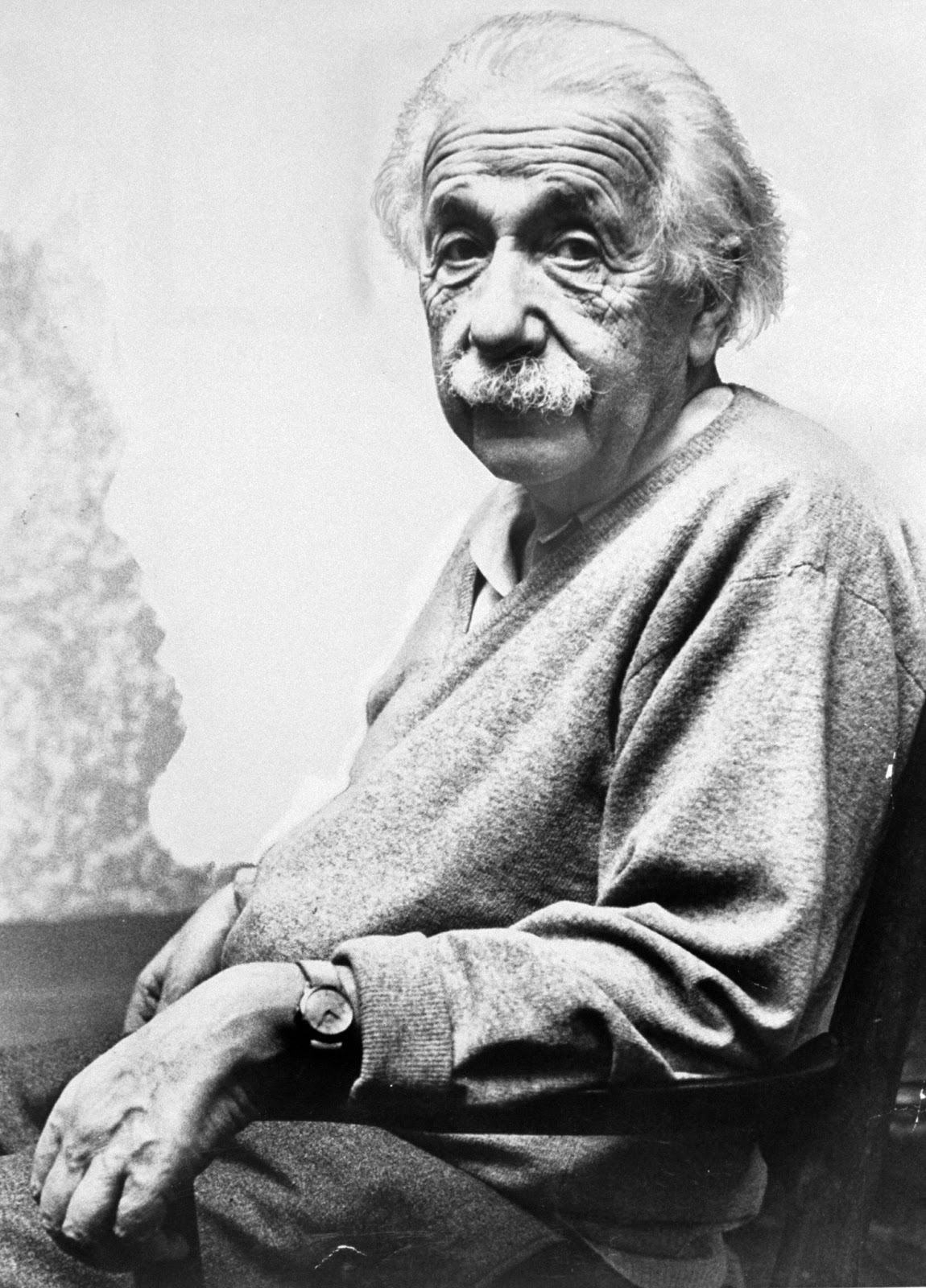
A seated portrait of Albert Einstein, Princeton, NJ, on his birthday, March 14, 1953. (Photo by Esther Bubley).
In 1905, a year sometimes described as his annus mirabilis (‘miracle year’), Einstein published four groundbreaking papers.
These outlined the theory of the photoelectric effect, explained Brownian motion, introduced special relativity, and demonstrated mass-energy equivalence.
Einstein thought that the laws of classical mechanics could no longer be reconciled with those of the electromagnetic field, which led him to develop his special theory of relativity.
He then extended the theory to gravitational fields; he published a paper on general relativity in 1916, introducing his theory of gravitation. In 1917, he applied the general theory of relativity to model the structure of the universe.
He continued to deal with problems of statistical mechanics and quantum theory, which led to his explanations of particle theory and the motion of molecules. He also investigated the thermal properties of light and the quantum theory of radiation, which laid the foundation of the photon theory of light.
However, for much of the later part of his career, he worked on two ultimately unsuccessful endeavors. First, despite his great contributions to quantum mechanics, he opposed what it evolved into, objecting that nature “does not play dice”.
Second, he attempted to devise a unified field theory by generalizing his geometric theory of gravitation to include electromagnetism. As a result, he became increasingly isolated from the mainstream of modern physics.

Albert Einstein in his home with Valentine Bargmann, Princeton, NJ, March 14, 1953. (Photo by Esther Bubley).
Einstein was born in the German Empire, but moved to Switzerland in 1895, forsaking his German citizenship (as a subject of the Kingdom of Württemberg) the following year.
In 1897, at the age of 17, he enrolled in the mathematics and physics teaching diploma program at the Swiss Federal polytechnic school in Zürich, graduating in 1900.
In 1901, he acquired Swiss citizenship, which he kept for the rest of his life, and in 1903 he secured a permanent position at the Swiss Patent Office in Bern.
In 1905, he was awarded a PhD by the University of Zurich. In 1914, Einstein moved to Berlin in order to join the Prussian Academy of Sciences and the Humboldt University of Berlin.
In 1917, Einstein became director of the Kaiser Wilhelm Institute for Physics; he also became a German citizen again, this time Prussian.

Blind terrier Chico, 14, is petted by secretary and stepdaughter, Margot, who make up Einstein’s household. (Photo by Esther Bubley).
In 1933, while Einstein was visiting the United States, Adolf Hitler came to power in Germany. Einstein, of Jewish origin, objected to the policies of the newly elected Nazi government; he settled in the United States and became an American citizen in 1940.
On the eve of World War II, he endorsed a letter to President Franklin D. Roosevelt alerting him to the potential German nuclear weapons program and recommending that the US begin similar research. Einstein supported the Allies but generally denounced the idea of nuclear weapons.

Famed scientist Albert Einstein in his study at home, 1948. ( Photo by Alfred Eisenstaedt).

With Albert Einstein, Cord Meyer Jr. (president of United World Federalists, Inc.) discusses Russia’s attitude toward world government. Einstein thinks Russians would first oppose world government then “once they see they cannot stop it… they will collaborate.” (Photo by Alfred Eisenstaedt).
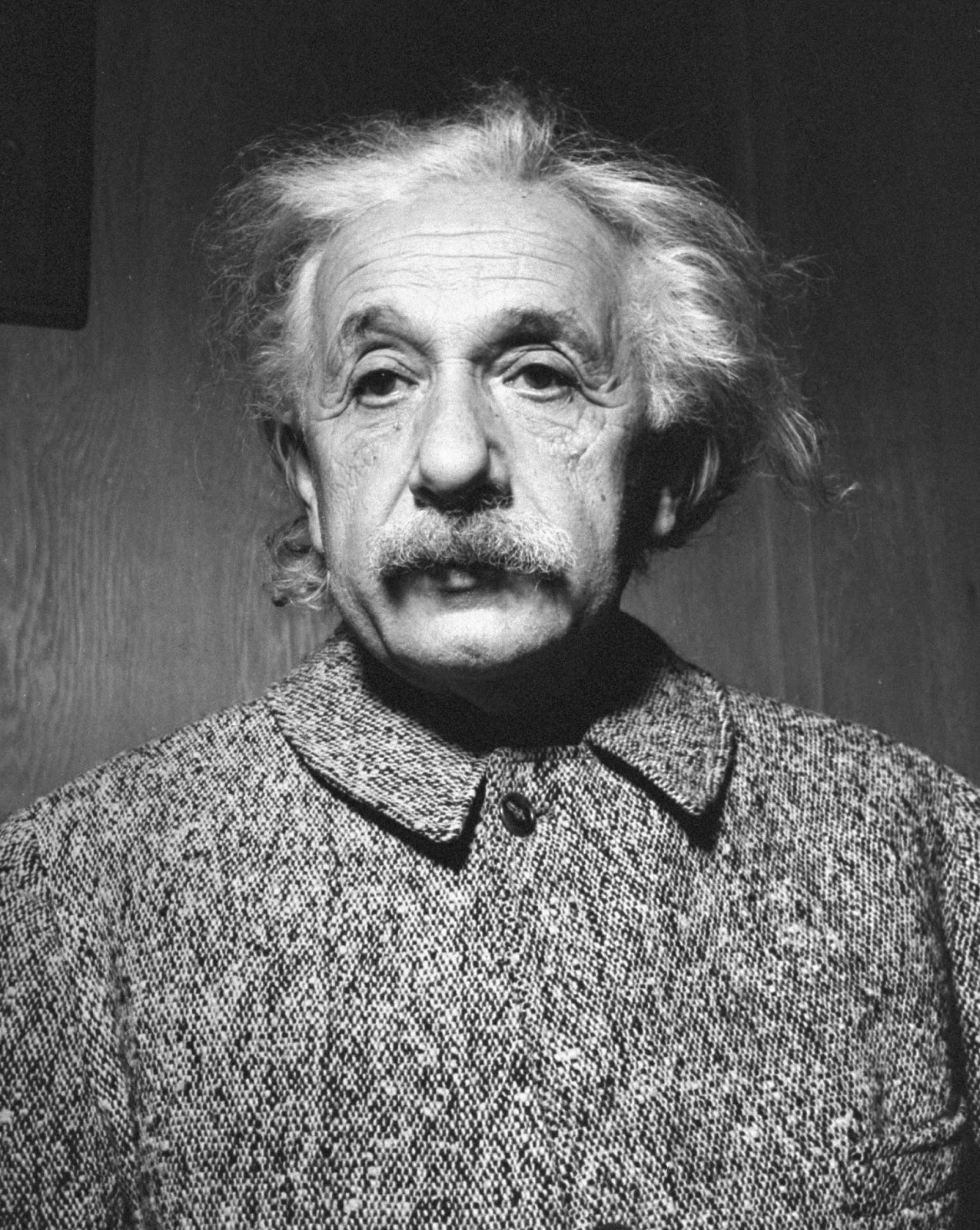
Portrait of Albert Einstein, 1947. (Photo by Al Fenn).

Albert Einstein, the [Institute for Advanced Study’s] most famous member, gives his first lecture in its only classroom. (Photo by Alfred Eisenstaedt).
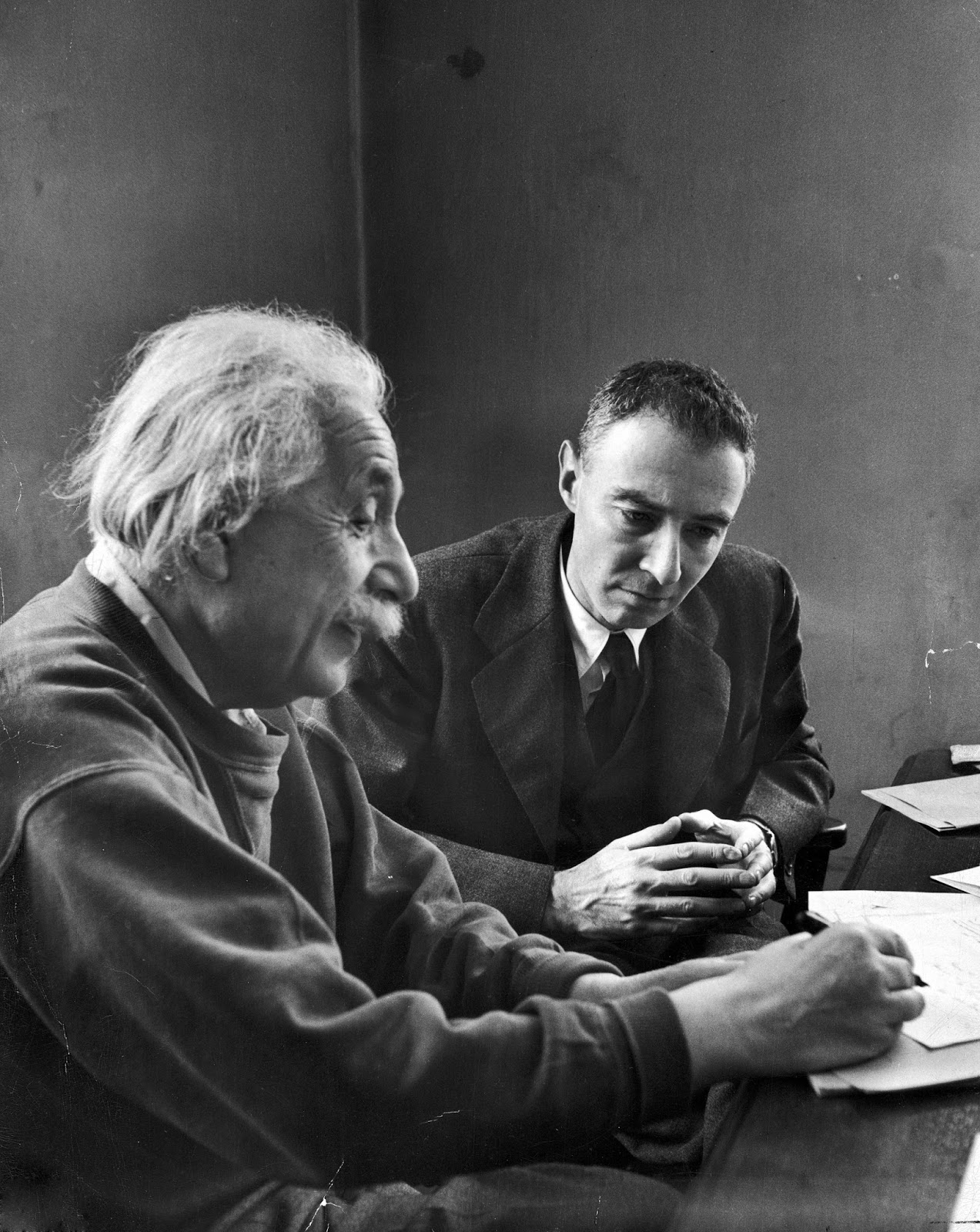
Einstein tells Robert Oppenheimer about his newest attempts to explain matter in terms of space. (Photo by Alfred Eisenstaedt).

Albert Einstein in discussion with Robert Oppenheimer in an office of the Institute for Advanced Study, 1947. (Photo by Alfred Eisenstaedt).
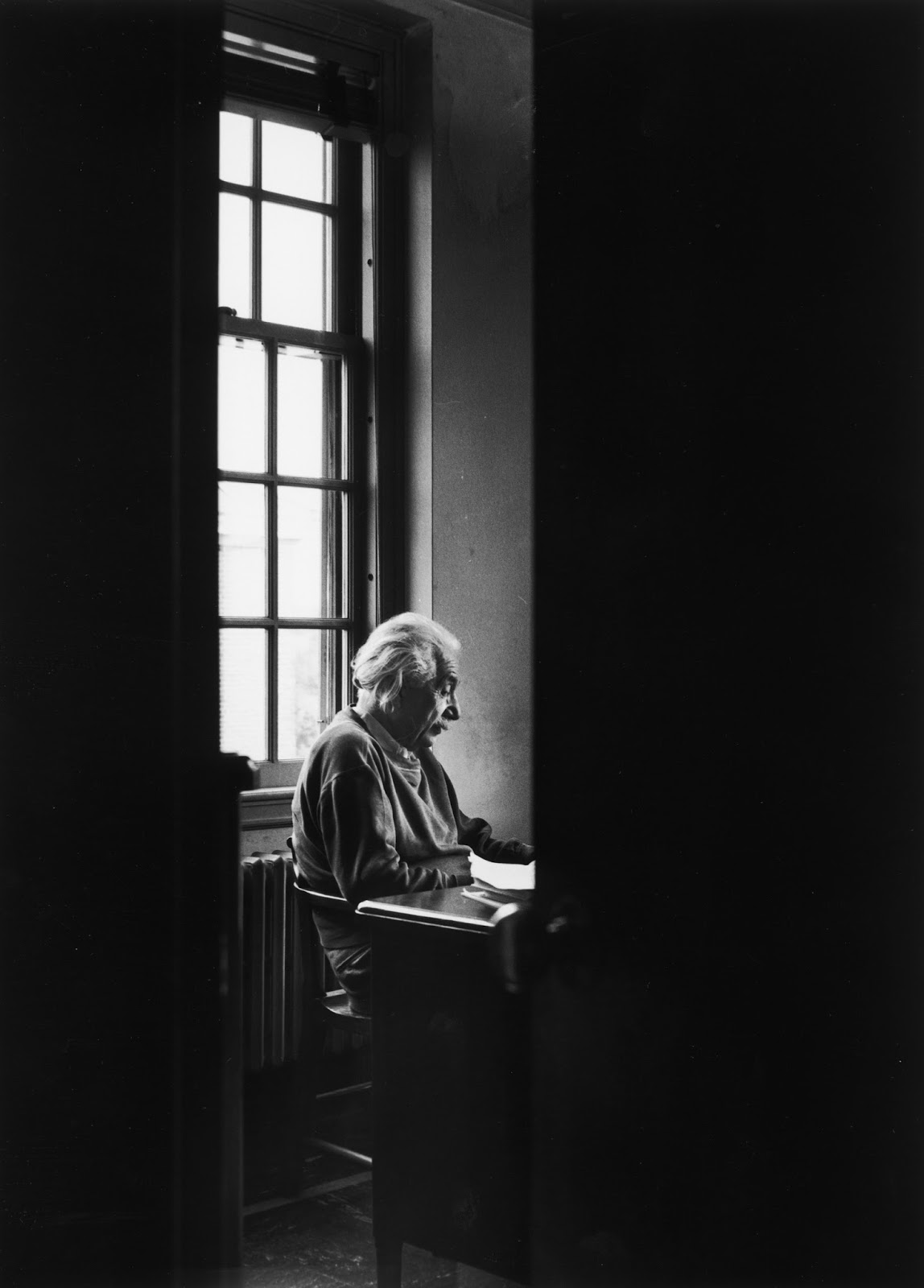
Albert Einstein sits alone at the Institute for Advanced Study, 1947. (Photo by Alfred Eisenstaedt).

Albert Einstein plays his beloved violin, in 1941. (Photo by Hansel Mieth).

Albert Einstein’s violin recital, 1941. (Photo by Hansel Mieth).

A childhood portrait of Albert Einstein and his sister Maja.

Albert Einstein on his 75th birthday, March 15, 1954, in Princeton, New Jersey.


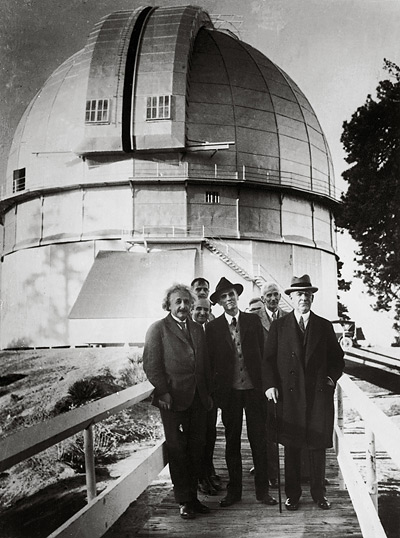
Einstein visiting the observatory of Mount Wilson, which at that time operated the largest telescope.

Albert Einstein escorts his daughter, Margot, and Dimitri Marianoff’ to the civil registry office for their wedding.



Einstein walks through the campus of the Institute for Advanced Study.



Einstein gives a speech at the London Albert Hall.


Einstein, his secretary Helen Dukas, left, and his daughter Margaret Einstein take the oath of U.S. citizenship.

The only known photo of Albert Einstein with his energy-mass equation, 1934.
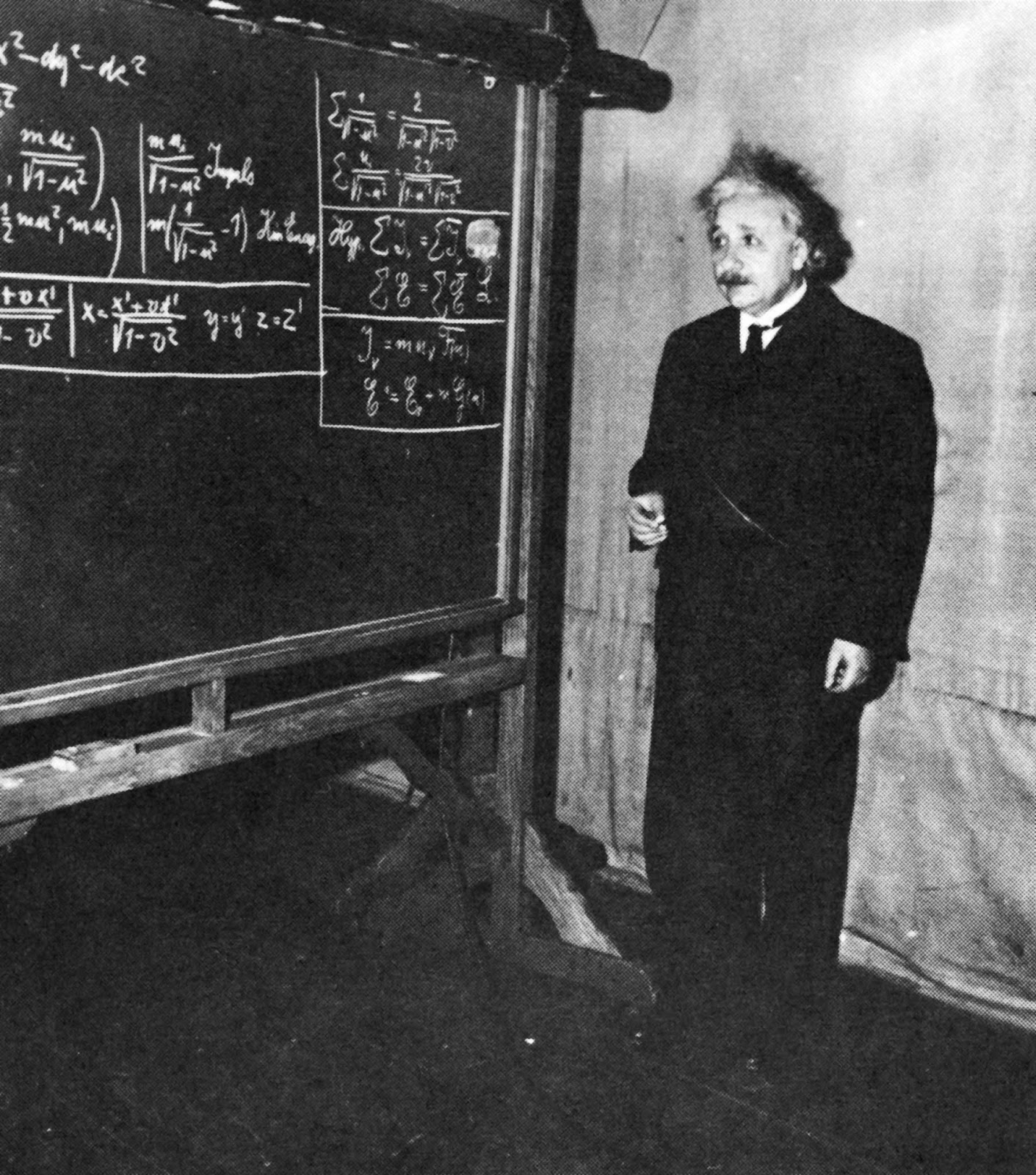
The newspaper publicity picture prior to the lecture. Unfortunately, Einstein is posed next to the left blackboard, which does not contain the famous energy-mass relation.

Newspaper clipping of a photograph taken during the lecture. This is probably the only extant picture of Einstein with his energy-mass equation, which is in the lower left-hand corner of the right blackboard.
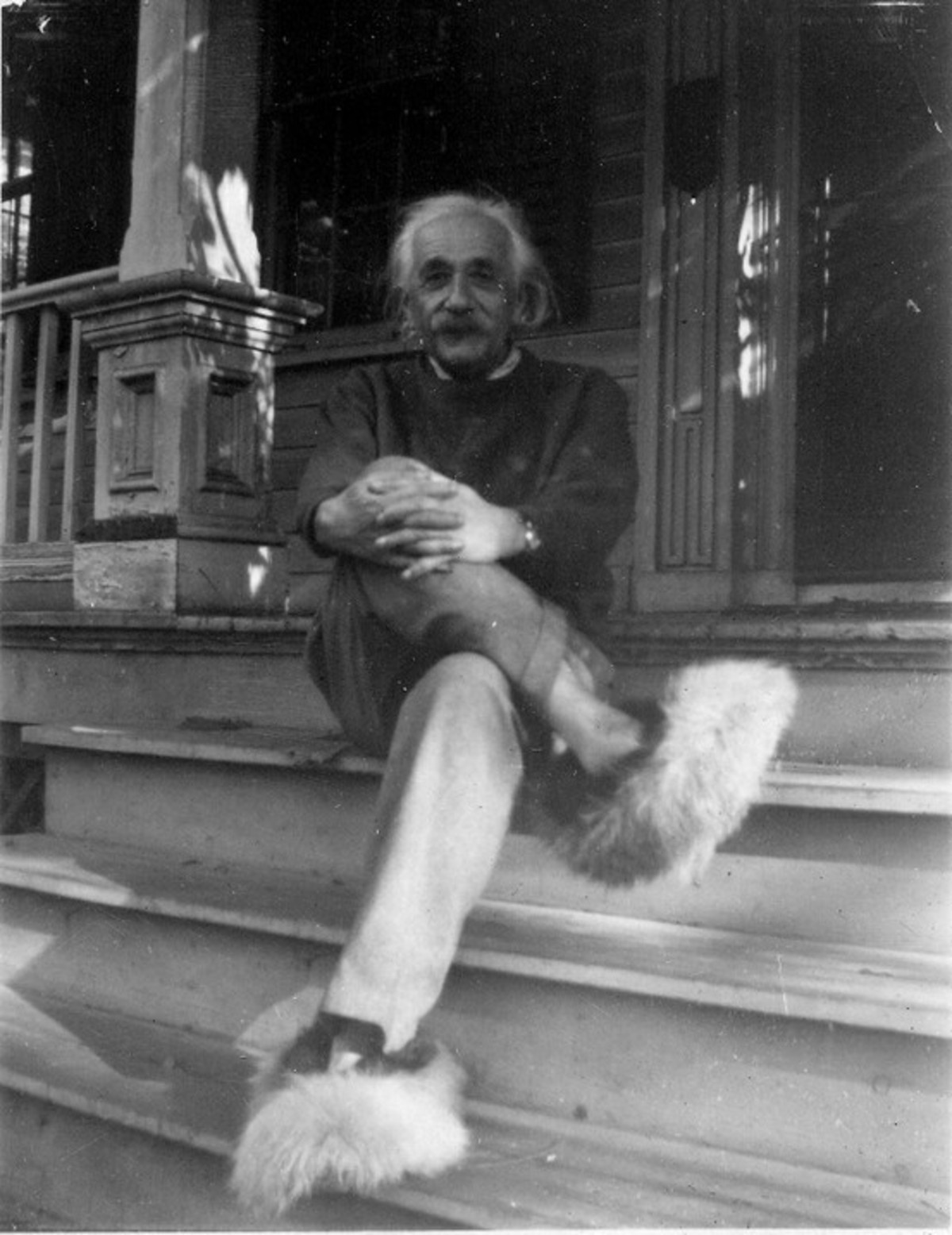
Albert Einstein wearing a glorious pair of furry slippers at his home in Princeton, NJ., where he lived until his death in 1955.
(Photo credit: Wikimedia Commons / Britannica / Library of Congress / Life Magazine Collection / Princeton University / Getty Images).
Updated on: January 15, 2023
Any factual error or typo? Let us know.



